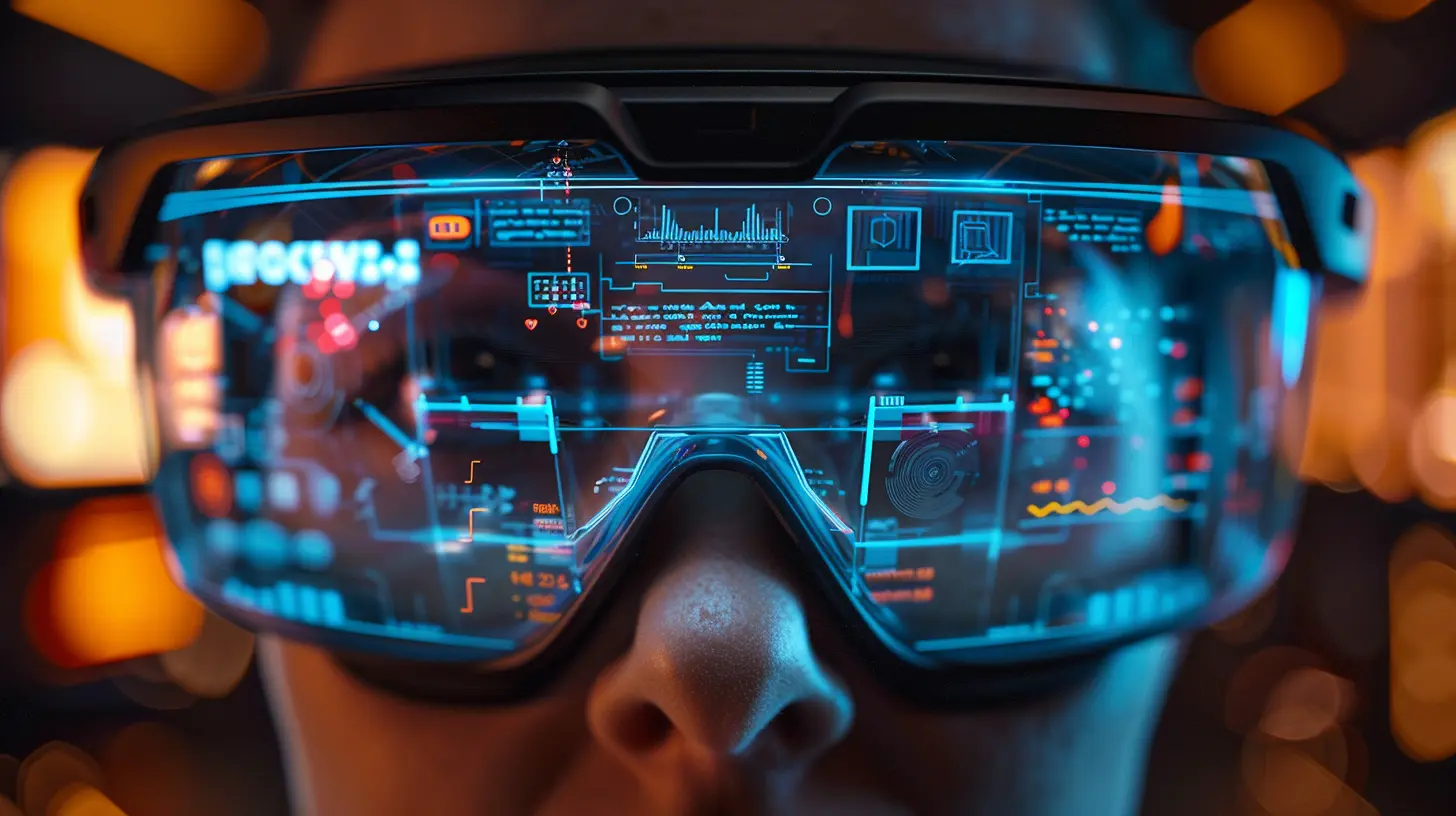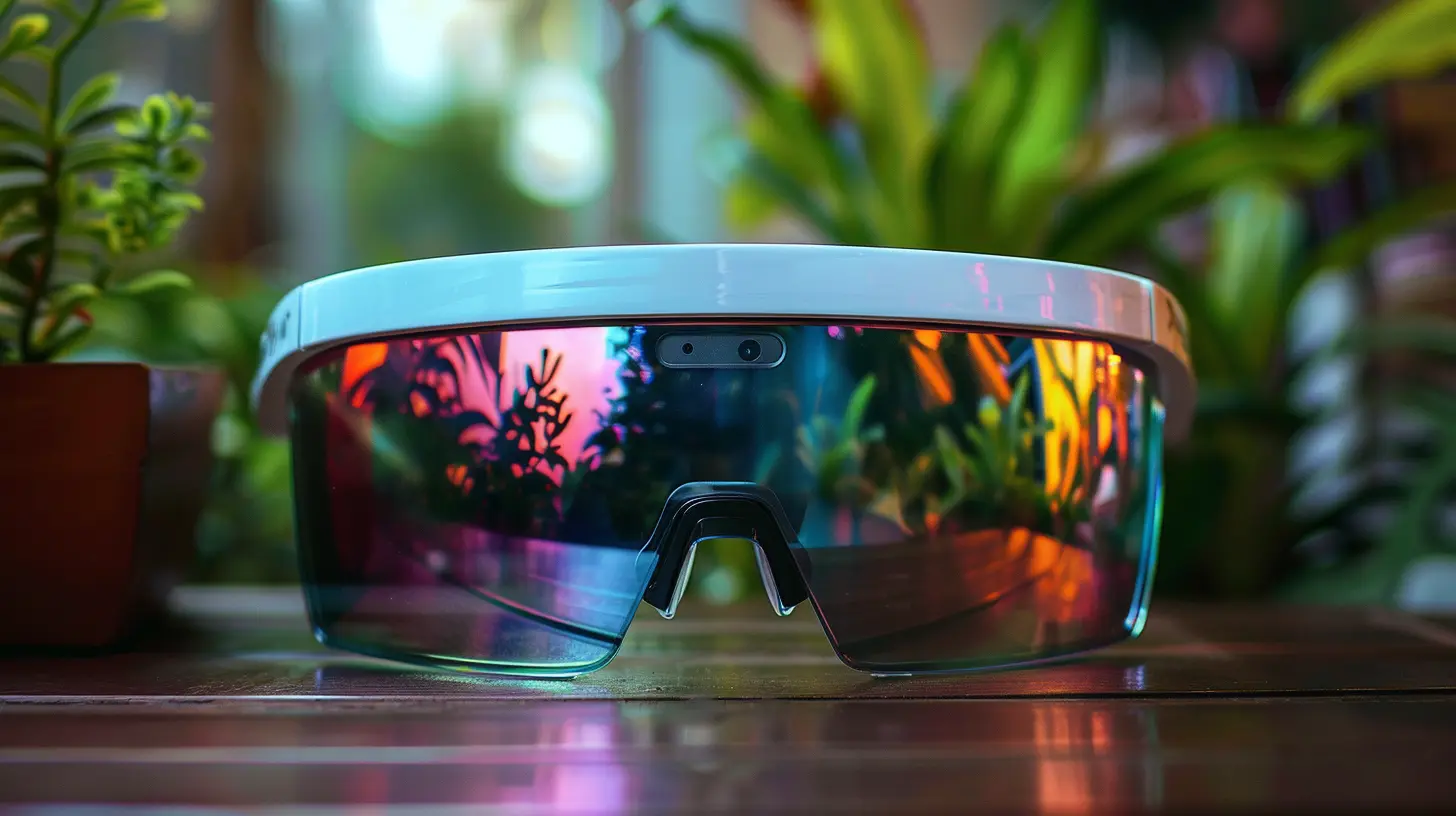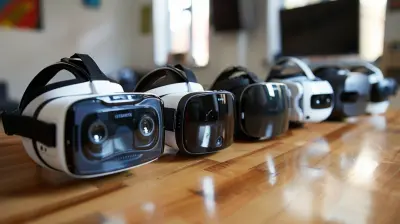From Concept to Reality: The Evolution of AR Glasses
10 September 2025
Augmented Reality (AR) has come a long way from being just a sci-fi fantasy. What once seemed like something straight out of a futuristic movie is now a tangible technology shaping various industries. Among its most exciting innovations are AR glasses—wearable devices that overlay digital content into the real world.
But how did we get here? What challenges did developers face in making AR glasses a reality? And where is this technology headed? Let’s dive into the evolution of AR glasses, from concept to reality.

The Origins of AR Glasses
The Early Days of AR Technology
AR technology isn’t as new as you might think. The foundation was laid back in the 1960s when computer scientist Ivan Sutherland developed the first-ever head-mounted display system called the "Sword of Damocles." This bulky device was far from portable, but it marked the beginning of AR’s journey.Fast-forward to the 1990s, and AR started gaining traction with military and industrial applications. The U.S. Air Force developed HUDs (Heads-Up Displays) for pilots, allowing them to view crucial flight data without looking away from their surroundings.
The First Attempts at Consumer AR Glasses
The idea of bringing AR to the masses sparked several ambitious projects. One such attempt was Google Glass, introduced in 2013. This lightweight device allowed users to access notifications, browse the web, and even take pictures using voice commands or gestures.However, despite all the hype, Google Glass failed to take off in the consumer market. Why? Several reasons:
- Privacy concerns (people didn’t want to be unknowingly recorded)
- Limited functionality
- Short battery life
- Social awkwardness (wearing them made users look odd)
Though it flopped as a consumer product, Google Glass found a niche in industries like healthcare and manufacturing, proving that AR glasses had potential.

Technological Advancements That Made AR Glasses Possible
Turning AR glasses from a cool concept into a practical product required overcoming several hurdles. Let’s look at some key technological breakthroughs that helped push AR glasses closer to mainstream adoption.1. Miniaturization of Hardware
Early AR glasses were bulky and uncomfortable, but advancements in microprocessors, optics, and display technology allowed manufacturers to create sleeker, more lightweight designs. Today’s AR glasses are more compact, resembling standard eyewear rather than sci-fi helmets.2. Improved Display Technology
For AR glasses to be useful, the display must seamlessly overlay digital content onto the real world without being intrusive. Thanks to advances in waveguide optics, OLED displays, and holographic projectors, modern AR glasses offer high-resolution visuals with better contrast and brightness.3. AI-Powered Real-Time Processing
Artificial Intelligence (AI) and machine learning play a crucial role in modern AR glasses. These technologies help recognize objects, interpret surroundings, and deliver relevant content in real time. For example, AI-powered AR glasses can translate languages, provide navigation assistance, or even recognize faces.4. Faster Connectivity and 5G
For AR to work smoothly, fast and reliable internet connectivity is essential. The rise of 5G networks has significantly improved AR experiences by reducing latency and allowing real-time streaming of high-quality content.5. Battery Life Improvements
One major limitation of early AR glasses was the short battery life. Thanks to more energy-efficient processors and battery advancements, modern AR glasses can last longer without needing frequent recharges.
AR Glasses in Today's World
The AR glasses market has expanded beyond just tech enthusiasts. Today, various industries are harnessing the power of AR eyewear to improve productivity, efficiency, and engagement.1. Gaming and Entertainment
Gaming companies have embraced AR glasses to create immersive experiences. Devices like the Microsoft HoloLens and Magic Leap allow players to interact with digital objects in their physical environment, blurring the line between reality and virtual worlds.2. Healthcare and Medical Training
Doctors and medical professionals use AR glasses for remote surgeries, medical training, and diagnostics. Surgeons can access real-time patient data while operating, reducing the need for physical screens and improving precision.3. Workplace and Industrial Applications
Industries like manufacturing, logistics, and construction benefit from AR glasses by providing hands-free access to instructions, schematics, and real-time collaboration tools. Companies such as Boeing and BMW use AR glasses to enhance assembly line efficiency and reduce errors.4. Retail and Shopping
Retailers are integrating AR glasses to enhance the shopping experience. Customers can try on virtual clothing, see how furniture would look in their homes, or get personalized product recommendations—all without stepping into a store.5. Accessibility and Everyday Use
For individuals with disabilities, AR glasses offer life-changing functionalities. For instance, visually impaired users can leverage AR technology for real-time navigation and object recognition, improving their independence.
Challenges Remaining in AR Glasses Development
Despite the progress, AR glasses still face several challenges before they become a mainstream gadget for everyday users.1. Price and Affordability
Most high-end AR glasses today are expensive, making them inaccessible to the average consumer. Lowering costs while maintaining quality remains a significant challenge for manufacturers.2. Privacy and Security Concerns
With AR glasses equipped with cameras and sensors, privacy issues remain a hot topic. People are wary of being recorded without consent, and companies must address security concerns to prevent misuse.3. Comfort and Design
While AR glasses have become more compact, they still aren't as lightweight or stylish as regular glasses. Long-term comfort is another factor companies need to improve for widespread adoption.4. Limited AR Content and Applications
The success of AR glasses depends on the availability of rich AR content. Developers need to create engaging apps and experiences that make purchasing AR glasses worthwhile for consumers.The Future of AR Glasses
So, where are we headed?Companies like Apple, Meta, and Microsoft are investing heavily in AR, and the next few years could bring game-changing innovations. Some exciting possibilities include:
1. AR Glasses Replacing Smartphones
Imagine a future where AR glasses replace our smartphones entirely. Instead of looking at a screen, you'd see a virtual interface floating in front of you, controlled with voice commands or hand gestures.2. Integration with AI and the Metaverse
As AI evolves, AR glasses could become more intuitive, understanding user needs and enhancing daily experiences. Additionally, AR glasses may serve as a gateway to the Metaverse, merging digital and physical spaces seamlessly.3. Enhanced Social and Workplace Interactions
AR glasses could revolutionize social interactions, allowing people to engage in virtual meetings, attend concerts, or even hang out with friends in mixed-reality environments.4. Adoption in Daily Life
As AR technology matures, we might see AR glasses becoming as common as smartphones, offering real-time translations, navigation help, fitness tracking, and more.
Final Thoughts
From the clunky "Sword of Damocles" to sleek, powerful AR wearables, AR glasses have evolved dramatically. While challenges remain, there’s no denying that we’re on the brink of a future where these glasses could become an everyday essential.Would you wear AR glasses if they became widely accessible? Or do you think they'll remain a niche product? Either way, the journey from concept to reality has been fascinating—and the best is yet to come.
all images in this post were generated using AI tools
Category:
Ar GlassesAuthor:

Jerry Graham
Discussion
rate this article
1 comments
Bailey McDowney
Exciting journey! AR glasses are finally here!
September 14, 2025 at 4:16 AM

Jerry Graham
Thank you! It’s indeed an exciting time as AR glasses move from concept to everyday use.


